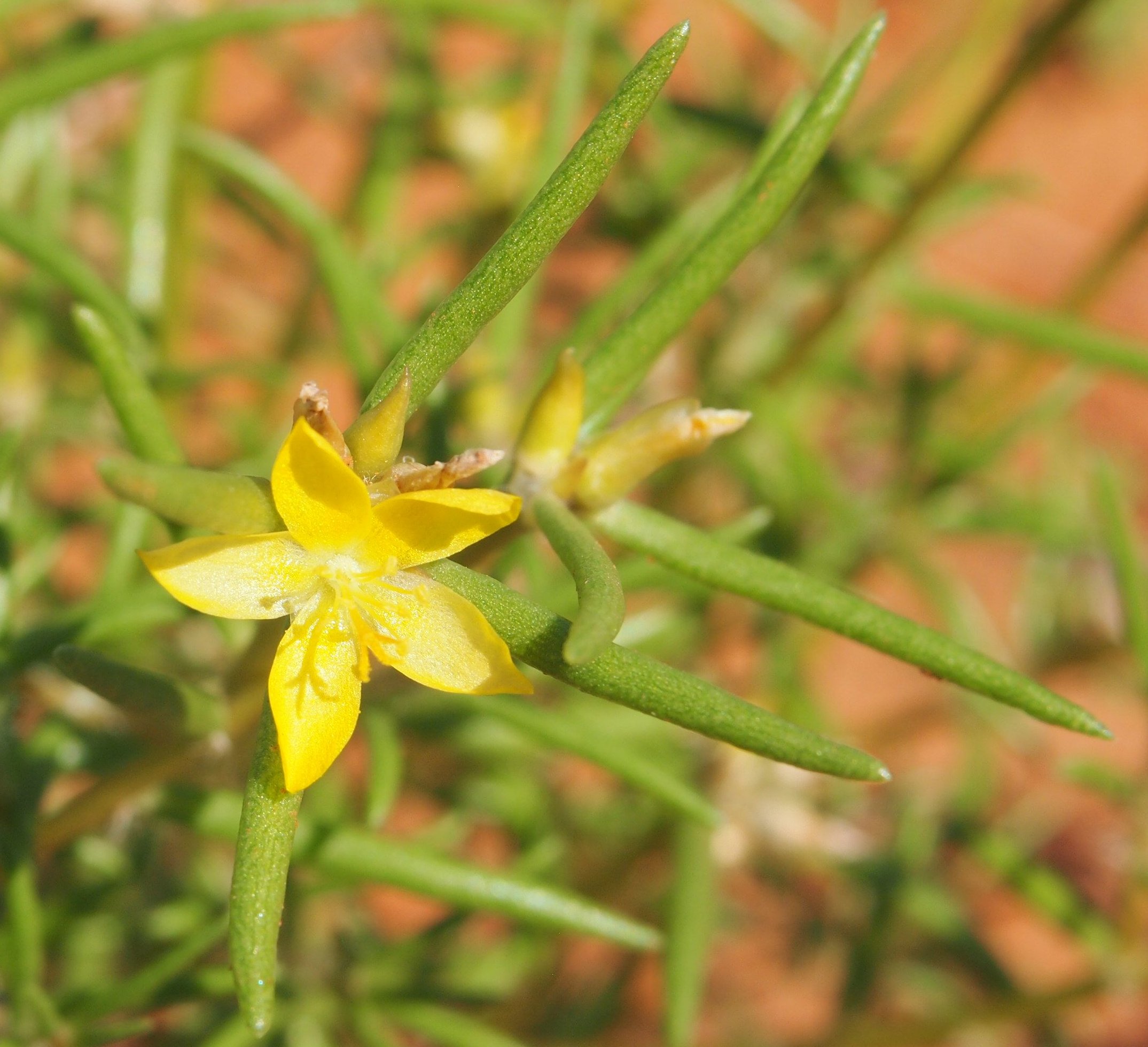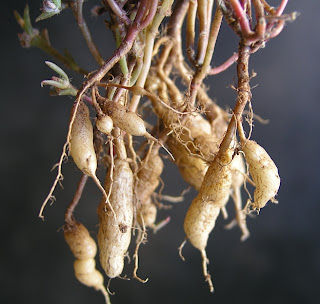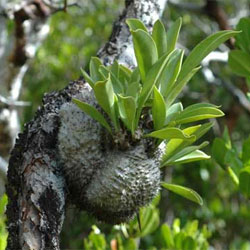他的正確分類地位和學名未知,但長相上的確有不一樣,並非亂取一通的名稱。
Cape Guardafui 是地名,Cape是海角,海角七號的那個海角。
Guardafui 是賈德福利,所以這是長在索馬利亞_賈德福利海角的大戟。
栽培難度高的強刺型枝條大戟,要種活不難,但是種的好非常難,生長速度慢,很愛裝傻又很龜毛。
有可能好幾年都不生長,然後某一天突然瘋狂生長,長出許多新分支,有一陣一陣的生長週期。週期長短不固定,處發條件也未知,是連大戟專家都會覺得龜毛的品種。
因為很龜毛,經常會以嫁接的型態出售,能用插枝繁殖。老叢會呈現貼地匍伏的習性,這點和在原產地觀察到的野生植物生長方法一致。他偶爾會開出小的無梗花,顏色是棕色,會在莖側面長出小肉芽,於肉芽上開花(類似擬蹄玉)。
德國大戟栽培家Wolfgang Ewest表示,他自己嘗試過受粉很多次,從未得到種子過(不過他有拍到結果的照片)。也許園藝栽培中的所有個體都是同一個無性繁殖系(clone),基因相同所以無法授粉。
Wolfgang Ewest曾經拿自己種的Euphorbia sp. Cape Guardafui請教英國皇家植物園的大戟分類專家Susan Carter Holmes,她認為這是Euphorbia prona。
但是Goole一下就能看到,E.prona長的有一點不太一樣,像是表面花紋和疣粒突起的程度都不同。prona的物種發表論文幫助不大,主要提到的辨認特徵是prona的刺盾面積比較大,幾乎蓋整個疣粒,5稜,疣粒比較突起。這些特徵都無法把prona和Cape Guardafui區分出來。
再加上Euphorbia prona的原產地Bargal其實和Guardafui也沒離很遠(65公里而以)。
所以這兩個物種(?的分類地位有重新研究檢察的必要。
參考資料:
1.Wanted!!! Euphorbia prona S.Carter
Wolfgang Ewest
kap-ecklonii@t-online.de
賈德福利大戟的原產地照片和一些栽培經驗分享
2.
New pair-spined species of Euphorbia (Euphorbiaceae) from Somalia 1992
Susan Carter Holmes
prona 的物種發表論文
Euphorbia prona S. Carter sp. nov.
Type: Lavranos & Carter et al. 24730, Somalia, Bari Region, 8
km W of Bargal at base of escarpment, 11"17'N, 51"01'E, 17
Nov 1986 (K holotype, MOG isotype).
Species nova affinis E. inaequispinae N. E. Br. sed
caule multiramosa non caespitosa, caule et ramis crassioribus
(1.5-2 cm) 5-angulatis, tuberculis majoribus
prominentioribus distantioribus, podariis rotundatis,
spinis robustioribus aequalibus plerumque longioribus
(1.5-2 cm), aculeis saepe visibilibus sed rudimentariis
differt. - Fig. 7L-M.
Semi-prostrate succulent perennial, with sprawling stem
to 75 cm long, sparsely branched; roots fibrous. Stem
and branches terete, 1.5-2 cm thick, with prominent
tubercles 7-10 mm apart in 5 loosely spiral series separated
by deep grooves. Spine-shields completely
crowning the tubercles, suborbicular to obovate, 34 X
2.5-3.5 mm; spines robust, 1.5-2 cm long; prickles rudimentary,
0.2-0.5 mm long, but obvious, to 5 mm long,
on seedling plants before branches are produced. Inflorescences
not seen. - Fig. 7LM.
Distribution and habitat. E. prona is known only from
the east facing rocky mountain slopes of northeast Bari
Region, amongst very sparse Commiphora scrub, at
about 300 m in altitude.
Remarks. Although 1 have seen this species in a sterile
state only, both in habitat (supported by photographs)
and as herbarium specimens, it is distinctive enough to
allow a positive description. Like the preceding species,
E. dasyacantha, it is best compared with E. inaequispina
amongst those species already known from Somalia.
They both have a more or less prostrate habit, and
terete stem and branches, with tubercles in longitudinally
spiral series crowned by spine-shields bearing long
spines.
These features are also shared with E. dasyacantha to
which E. pronu is actually more closely related.
However,
this new species is a much larger plant, with
thicker stem and branches, more prominent and more
widely spaced tubercles in five, not seven to twelve,
spiral series, and a more robust spinescence with larger
spine-shields, longer spines and lacking the interlaced(看不懂) spinescence on the lower stem. Although prickles are
obvious, to 5 mm long, on seedling plants before
branches are produced, they are no more than rudimentary
(0.2-0.5 mm) on stems longer than about 8 cm
and on subsequent branches.
Flowering material has not been seen, but the formation
of the spine-shields, completely enveloping the apices
of the prominent tubercles, clearly indicates a relationship
with other similarly armed species from northeast
Somalia.
Typically, they produce orange-red
cyathia and small capsules exserted on recurved pedicels,
e.g. E. dasyacantha and E. atrox. It is unlikely to
be related to the only other possible group of species
from northern Somalia, as these are usually larger
shrubs which can be typified by E. nigrispina and E.
geldorensis. Characteristic features of this group are
longitudinally ridged branches with shallow tubercles
(or teeth), crowned by elongated, almost contiguous
spine-shields, and bright yellow cyathia with subsessile
capsules.
Collection orher than fype. Somalia. Bari Region: El Gal road,
10 km W of junction with Iskushuban-Bargal road, ca.
10"55'N, 50"55'E, 30 Nov 1970. Bavazzano & Lavranos s.n.
(FT).







